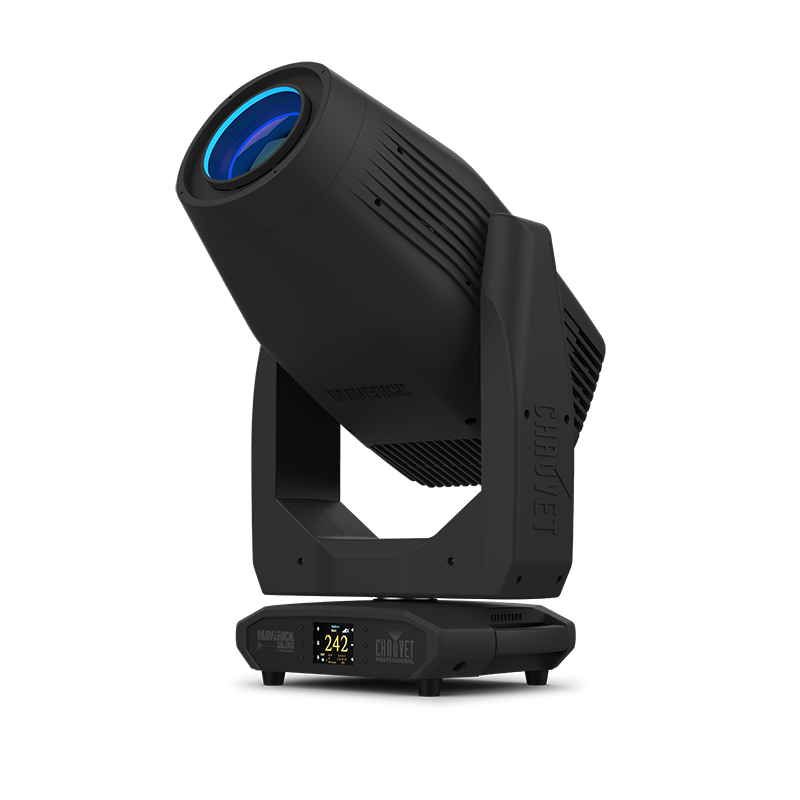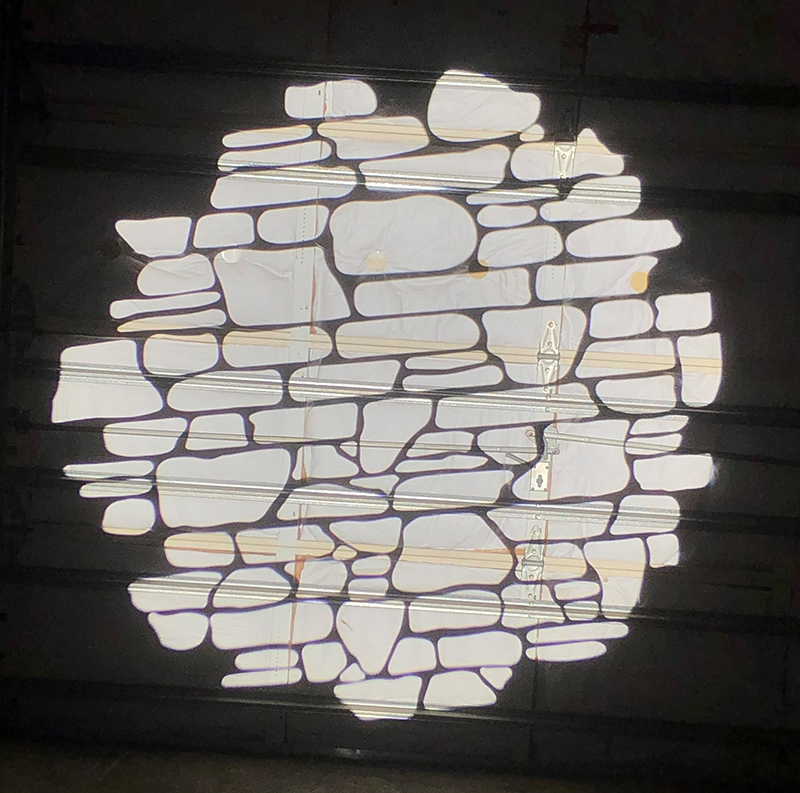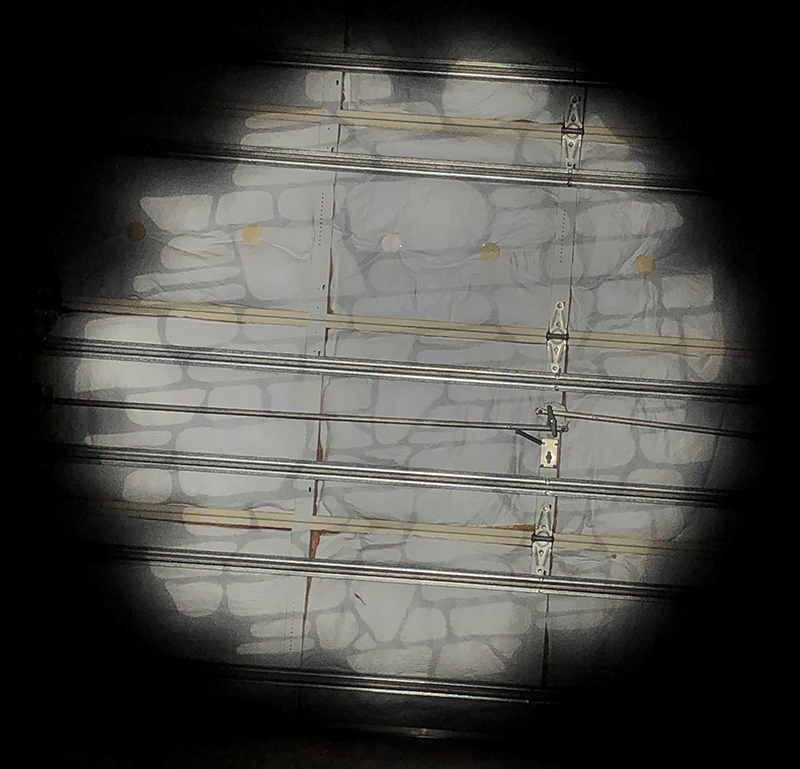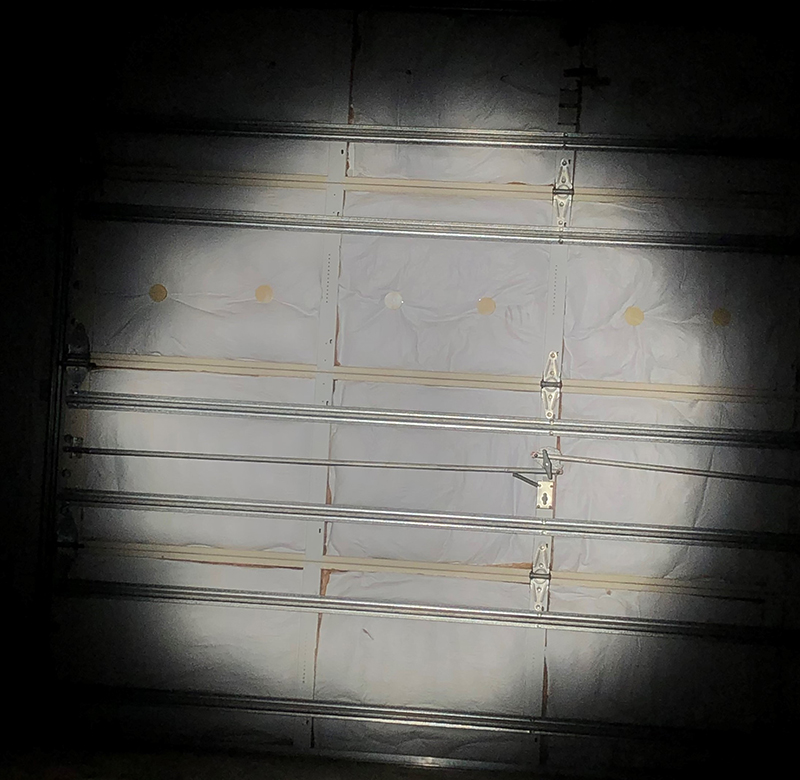
Every so often, something comes our way that is designed to make some noise in the industry. When it comes to the Maverick Silens 2 Profile from Chauvet Professional it’s the absence of noise that is what makes it special; or one of the things, actually. I was asked to take a deep look into this latest (and completely fan-less) addition to the Maverick family, so without wasting any time, let’s jump in.
First Impressions
Upon receiving the fixture and taking it out of the box, I noticed immediately that the fixture has some weight to it. Coming in at 17.0 by 10.8 by 31.1 inches and 75.5 pounds, this light is very solidly constructed. Once I got the light set up for power and data and turned it on, the first thing that hit me was that there was very little calibration noise at all, and the familiar sound of fans running was completely absent, which is something to think about if you ever needed to turn on or reset the unit in a quiet environment like a studio or theater. Once the fixture calibrated, I found setup to be the same as the rest of the Maverick family. One notable exception was that this fixture is using LumenRadio for wireless data control rather than Wireless Solutions.
My next step is to program the fixture at full output in the 50/50 position. The 500-watt cool white LED light comes on at full and still, there is no noise. Even after letting it heat up for a while, I never heard any pings from the heat sink expanding as it tried to cool itself down. I move the light to shoot against a white wall. Before I go any further into my testing, I want to take some measurements with my handheld meter. Today I will be using my Sekonic C-700-U for checking the lux, color temp, and CRI. For Lumens, I will rely on the manufacturer measurements, as I can’t measure lumens in the field with any kind of accuracy. At 5 degrees, they measured 27,500 lux, then 642 lux at 50 degrees. I measured a CCT of 5948 and a native CRI of 94, all of which are within a narrow margin of error in comparison with the listed specs on the website. The output lumens from the website come in at 10,594.
Color
Moving past the open white source, the next thing I checked was the color mixing. The Maverick Silens 2 Profile uses CMY+ CTO flags that have gradients that overlap to intensify the color as it mixes together. I rolled in each color individually and noted that the saturation level of each color was good, but then I mixed the colors together and found that the yellow + magenta mix gave me a very intense and accurate red (665 peak nm). When mixing cyan + yellow (540 peak nm) to make green and magenta + cyan (450 peak nm) to make a Congo blue, I was equally impressed. Running in the CTO also looked great as I was able to get a wide variety of color temperatures without having to sacrifice too much output to get there. In running the color wheel, I could see that there was thought put into the placement and color selection. This is particularly apparent when looking at split colors. The colors on the color wheel are not overly saturated so you not only get good color, but still maintain output.
Zoom and Focus
In a theatrically based moving head spot, the ability to smoothly zoom and maintain an even focus, whether hard of soft, is extremely important. In running the zoom to its extents (6 to 54 degrees) on both ends I found that the shape of the beam remained constant and that the focus kept up with the movement well. I also found that the focus itself was incredibly even across gobos when tested in both hard and soft-focus settings. Because the field is so flat, gobo morphing is really solid. The animation wheel can then be run under any of the gobos to create great texture effects like flame and water animations.

Gobos, Prism, Frost, Iris and Framing
The Maverick Silens 2 Profile has two gobo wheels, as most fixtures of this class do. With one static and one rotating wheel each, the fixture has a total of 15 glass gobos inside the fixture. What is fairly unique is that the gobos can be moved from one wheel to the other so that the user can decide which gobos should be static and which should rotate. The other nice thing is that the gobos were designed specifically for this fixture and, in my opinion, there is not a throw-away in the bunch. Each gobo is useful for breakups, texture, and a few air effects. This fixture also has a five facet round prism with very little cut off in wide angles, which keeps the integrity of the overall effect no matter what the zoom angle is. If you need a tighter diameter circle, there is an iris that can help you out there.

Next, I am dropping out the prism and getting a hard edge back on to the gobo to test the frost. Now, normally, we have a choice here of frost in or frost out. Chauvet Professional stepped it up a notch by making their frost fully variable. This means I can create a time fade on my frost coming in and make it look amazing across the entire gobo, not just right to left. To make it even a little nicer, the frost does not go so far as to completely erase your image. Even in the heaviest value, the image overall shape is still intact, but really fuzzy, as I feel it should be. There is one more point to be made about the frost, but I’m going to hold off on that for a moment.

As all profiles should, the Silens 2 Profile has four independently adjustable shutter blades. Each blade has an insert and pivot function and can be used to fully blackout the fixture, so doing a curtain reveal is totally possible. What is really nice about these particular shutters is that you can get a good relative focus on the blades so that you don’t have one in a hard focus and another that is in a totally soft focus. You can get a very solid middle ground so that the box or triangle you are trying to create looks good. When zooming to its widest extent, one would expect there to be a bit of the dreaded “banana effect” which makes the blades appear to bow in the optical path. As I have already mentioned, the optics in this fixture are fantastic, so the blades are flat. Quickly back to the frost. A key function of frost in profile fixtures is that the frost makes the blades evenly fuzzy so that you can blend the cutoff into the scenery. Because of the variable frost on this fixture, this box is getting a check plus.
Dimming, (+/-) Green and Red Shift
Saving the best for last, let’s talk about dimming, which on this fixture, you just need to see it. I set up a 30-second fade to black to look for the flaws that LEDs are known for in the bottom few percent. On the Silens 2 Profile, they don’t exist. So just to take one more look, I set up for a 20% output to 0 dim over 30 seconds. Smooth as glass. Because apparently flawless dimming wasn’t enough, Chauvet Professional also provides a user-selectable redshift so that when I’m dimming out, I can emulate a tungsten effect. And last but certainly not least, The LED itself has been customized to allow it to be tuned for + or — green effects, which are especially helpful on camera. For strobe effects, there is an electronic strobe that can pulse up to 20hz and improves on the virtual strobe effect that other Mavericks have in which the LED drivers are pulsed to create a rolling strobe effect. This fixture has five separate drivers that control the LED, so there are several new options to play with and create some very interesting visual effects.
In Conclusion
The Maverick Silens 2 Profile hits all the points on a light that I would expect to see in a theatrical or studio application moving head fixture. The ABS matte black head covers are held to the steal body with 2 quarter turn screws. The modules in the fixture are easily removed for quick cleaning and maintenance. It’s quiet, it’s bright, and it is optically extremely well set up. The overall effects package is thoughtfully designed, and it’s all wrapped up in a nicely designed and well-engineered body. The only con on this fixture is the weight, but with the cooling needs, even that is understandable. This fixture is absolutely something to check out for your next theatrical or studio application.
At A Glance:
A Quiet Standout Performer
Silence is golden when it comes to this fixture. While fanless, this medium sized fixture packs enough punch for any theater, studio or environment that demands silence, yes smooth dimming, saturated colors and great textures.
Maverick Silens 2 Profile
PROS: Silent operation, even when changing gobos or moving. Smooth dimming, excellent gobo choices. Good output for a medium sized fixture.
CONS: It’s a little on the heavy side
SPECS
- Lamp Source: 1 LEDs (CW) 500 W, (15.5 A), 6000 K, 1 LED (RGB) 60 W, (3.2 A)
- Total Wattage: 640 W, 5.45 A @ 120 V, 60 Hz
- Weight: 75.5 lbs.
- Dimensions: 17.0 x 10.8 x 31.1 inches
- Colors: CMY+CTO, 6-position color wheel
- Zoom Range: 6° to 54°
- Gobo Wheels: 7 rotating, 8 static
- Prism: Single five-facet lenticular prism
- Frost: Variable
- Software Upload: USB
- MSRP: $10,150
Manufacturer: Chauvet Professional
More Info: www.chauvetprofessional.com


